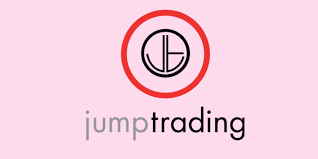Babbitt Column | How to use the popular OKR management tools of big companies to manage decentralized coins?
Editor's Note: The original title was "Manage Decentralized Coins with OKR".
In the autumn of 2019, in a dinner, Zhang Luo was a beautiful woman, who was introducing everyone one by one. When she introduced me, she said: This is COO of BCH.
Half of the people knew me on the spot and laughed instantly. I was drinking water and sprayed a table. The man next to me smoked and choked me to death for a while.
After a while, I explained that I am not the COO of BCH. I am just a cryptocurrency enthusiast, and BCH is just a coin that I focus on. This is the same as my investment in stocks, focusing on the observation of Tencent stocks. Coins are decentralized and there will be no COO. . . . .
- After the Bitcoin crash: do others fear that I am greedy?
- Babbitt Column | Digging Deeper into the Causes of Bitcoin's Slump and Its Impact on the Future
- Edward Snowden: Bitcoin plunges for no reason, considering buying bitcoin
This is the head of the most hilarious scene I have ever experienced in the currency circle. Every time I think about it, I sigh, go to the central organization to come to Japan.
Decentralized projects are weakly organized, and those who do not go deep into them simply cannot understand what kind of structure this is, which is an obstacle to the development of the currency circle.
For decentralized projects, information collection is extremely difficult.
Anyone who wants to fully understand a coin often cannot get started. If you ask someone why they buy a certain coin? Most people may be listening to someone, seeing an article, attending a conference … It seems that we are extremely irresponsible for our investment.
The currency circle project does not have authoritative information release channels like stocks.
When we go to the "official website" of a coin, we just see some technical and ecological terms that are incomprehensible. We go to their WeChat group, either to see a red envelope on the handle, or to curse their mother.
Decentralized projects have extremely disordered and inefficient resource coordination.
In early 2020, the BCH community made a big news of lasting fermentation. BCH developers want financing to sustain development, and miners are willing to donate. But the two sides just couldn't connect.
For a decentralized project, the user does not know what the developer is doing, and the developer does not know what the user wants.
We want to contribute to a certain coin project, and we can't find the entrance. Neither the resource entry nor the results release entry could be found.
If you want to host an offline theme conference, and you want to ask the "project party" to sponsor some money, a real decentralized project, there is nowhere to look.
The popular OKR management tools of large companies should help optimize the management of decentralized projects.
OKR, Objectives and Key Results, this is the goal management system used by large enterprises worldwide. It was pioneered by Intel, and was adopted worldwide by Google. Currently in China, giants including Huawei, Byte Beat, Baidu, etc. are using it.
Because of its simple and effective goal focusing and scheduling resources, OKR has also been adopted by a large number of freelance workers. I have been using this tool for many years to manage my ideals.
The main goal of OKR is to clarify the "goals" of the organization and its members, as well as the "key results" by which the goals can be measured. Used to organize members to work together, define goals, coordinate resources and energy. Decentralized projects in particular need clear goals and coordinate resources.
OKR can be used to measure contribution, but now major companies advocate not to use OKR to link performance. Anyway, there is no performance evaluation for decentralized projects.
Those who use OKR advocate openness within the team, and some organizations even disclose OKR to the outside world. This is particularly consistent with the spirit of the blockchain project and is open and transparent.
OKR is an active management tool. Unlike KPI indicators, which are designed and distributed by companies from top to bottom, OKR tends to advocate that everyone set goals (O) and key results (KRs). Organizational managers determine the O and KRs of the organization, and other members also set their own O and KRs. Then discuss the mutual adjustment through the meeting.
This feature of OKR is particularly suitable for a messy group of unidentified co-emerged project goals and key results in a decentralized project.  Suppose you want to use OKR as a management tool in a decentralized project. What can you do?
Suppose you want to use OKR as a management tool in a decentralized project. What can you do?
There needs to be a place to write and display OKR. In a company organization, it is often an internal website. Team members can use their own accounts to write their own O and KRs, and they can also refer to others. In the currency circle, any centralized website cannot be popularized to most people in the community. A reasonable approach is to abandon the idea of centralized information management and switch to a decentralized information management model. The writing format of OKR is designed as a protocol and integrated on the chain.
Take the Bitcoin network, for example, you can use the OP_Return field to design the OKR protocol. When you write your own OKR, you can write in this format and go to the chain with a transaction. The local client can read and parse to read the OKR of others.
The protocol can be designed as follows: the first few bits are fixedly labeled as OKR; the following bits represent O; followed by KR1, KR2, …, KRn; and finally the identity signature.
OKR transactions must be designed to cover modifications. By spending the UTXO associated with the OKR transaction, you can do operations such as modification and setting completion.
The KR itself can be associated with a front-to-back O or a front-to-back KR. For example, a development has announced an O and developed a certain function, of which KR1 is a fundraising plan. I hope to get money to complete this O.
Can support or oppose an OKR. For example, sending 1 Satoshi to the address associated with an OKR means support, and sending 2 Satoshi to represent the objection.
Any ecological node of a project has reason to show its OKR to its users as much as possible. Therefore, any ecological node can display its own OKR on its own product.
For example, developers can integrate a page in the full node developed by themselves, which is used to display their OKR. Wallets can also integrate OKR into clients. The blockchain browser can also collect and parse the OKRs of all users.
In the "official website" of the decentralized project, its operating personnel can also pick out the OKRs that he considers to be the most valuable to display to users.
Users need to write and upload their own OKR through a transaction, as long as the wallet supports the OKR protocol. It is technically easy to implement. People with technical ability can also construct transactions with OP_Return by themselves, and write according to the OKR protocol format.
The last few fields in the OKR format require an identity signature, which is used to identify who issued the OKR. Every user should maintain their digital identity. In the Bitcoin network, it is a public-private key pair. Users can publish their public keys to their social media accounts for easy on-chain identification.
With the OKR agreement, a coin community can collect and organize project information through OKR, and can observe and monitor the development of the project.
When a person wants to contribute to the community, OKR can be used to collect information and publish resource requirements.
Users who want to donate can be matched directly through the fund raising KR in OKR.
If an OKR can be supported and opposed by other users, if you support an OKR item, send 1 Satoshi to the past, and objection to 2 Satoshi past. This can bring important consensus to the community.
Hope someone can practice it.
Author: Huang Shiliang
Welcome to WeChat public account: Lightning HSL, H13116885
Welcome to BTM: bm1qefc720au672awrgazgw5c3kx7etr5kejju02p7
We will continue to update Blocking; if you have any questions or suggestions, please contact us!
Was this article helpful?
93 out of 132 found this helpful
Related articles
- Black Swan Crypto Assets under High Leverage | BlockVC Research
- why? How to do? 3.12 plunge tragic, industry insiders give these answers
- Why has Bitcoin plummeted? We may need to rethink the hedging nature of Bitcoin
- QKL123 market analysis | US stocks remelt, gold and crude oil fell, bitcoin was cut … chain reaction under crisis (0313)
- Babbitt Original | Futures burst in a row, miners have been circled, 3000 dollars is the last pass?
- Anthony Pompliano: Liquidity crisis causes global market shocks, Bitcoin will be the ultimate winner
- Don't despair






